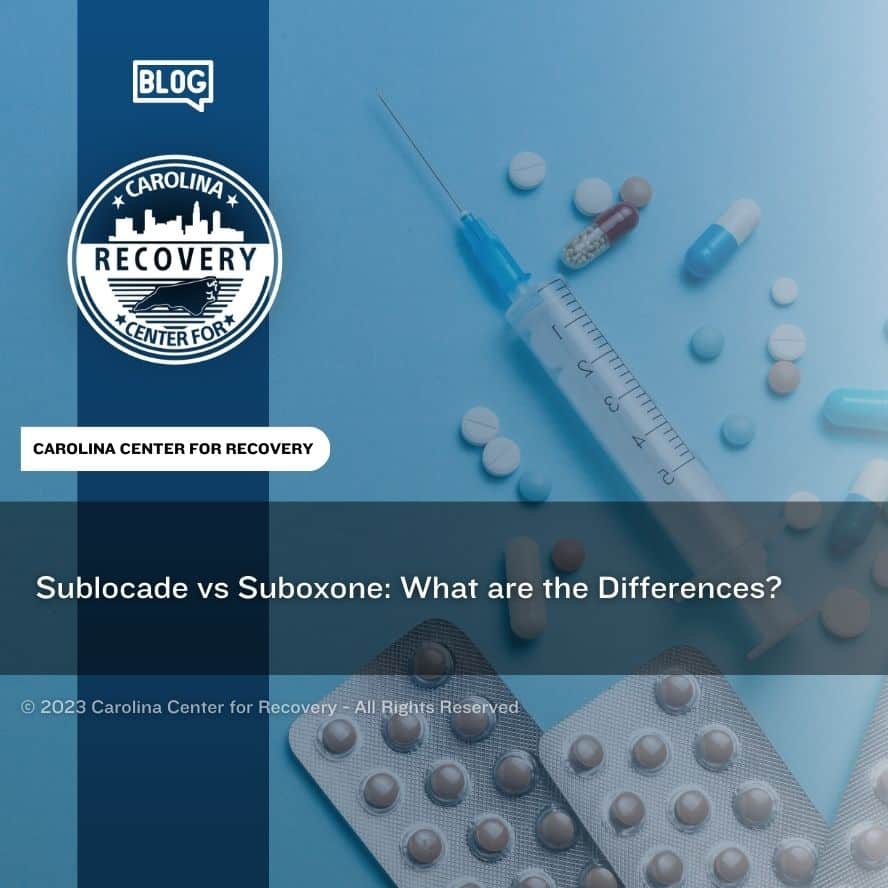Sublocade vs Suboxone: What are the Differences?

Medically Verified: 2/1/24
Medical Reviewer
Chief Editor

All of the information on this page has been reviewed and verified by a certified addiction professional.
Opioid addiction is often treated with the help of medications in a comprehensive approach known as medication-assisted treatment (MAT). Before 2002, methadone was the only medication approved by the U.S. Food and Drug Administration (FDA) for the treatment of opioid use disorder. However, several new medications have been introduced in the last two decades that are safer and less addictive than methadone.
Today buprenorphine is one of the most widely used medications for opioid addiction. Buprenorphine is available in a few different formulations and sold under various brand names, including Sublocade and Suboxone.
Understanding Buprenorphine
Since the primary active ingredient in both Sublocade and Suboxone is buprenorphine, it’s essential to understand what buprenorphine is and how it works. Buprenorphine is a medication primarily used in the treatment of opioid addiction and chronic pain management. It belongs to the class of medications called opioid partial agonist-antagonists.
As a partial opioid agonist, buprenorphine binds to the same receptors in the brain as opioids but only partially activates them, providing a milder effect compared to full opioids. It also blocks other opioids from binding to the receptors, reducing their effect. These properties allow the medication to reduce opioid withdrawal symptoms and cravings.
While buprenorphine has a lower abuse potential compared to full opioids, it’s not risk-free and should be used as prescribed.
What is Suboxone?
Suboxone is a brand-name prescription medication that contains buprenorphine and naloxone. It was approved by the FDA to treat opioid use disorder in October 2002.
While the buprenorphine in Suboxone works by alleviating withdrawal symptoms and cravings, the naloxone is added to reduce the abuse potential of the medication. Naloxone is an opioid antagonist, meaning it blocks the effects of opioids by binding strongly to opioid receptors without activating them.
When Suboxone is taken as directed, naloxone doesn’t produce any effects. But if someone tries to misuse Suboxone by injecting it intravenously, the naloxone component becomes active, causing immediate and severe withdrawal symptoms. Due to its potential to trigger withdrawal, it acts as a deterrent for misuse.
Suboxone comes in the form of a sublingual film or tablet that dissolves under the tongue and is absorbed into the bloodstream. It is designed to be taken daily and comes in four dosages:
- 2 mg buprenorphine/0.5 mg naloxone
- 4 mg buprenorphine/1 mg naloxone
- 8 mg buprenorphine/2 mg naloxone
- 12 mg buprenorphine/3 mg naloxone
The length of Suboxone treatment varies greatly depending on each person’s individual needs.
Suboxone Side Effects
Side effects of Suboxone include:
- Nausea
- Headache
- Vomiting
- Constipation
- Insomnia
- Sweating
- Numbness
- Blurred vision
- Dizziness
- Back pain
- Tongue pain
- Irregular heartbeat
- Difficulty concentrating
- Withdrawal symptoms if misused or stopped abruptly
What is Sublocade?
Sublocade is the first monthly injection to be approved by the FDA in November 2017 for the treatment of moderate to severe opioid use disorder. It contains buprenorphine but in injectable form.
Sublocade is a subcutaneous injection meaning it is administered just below the skin. Most of the time, it is given in the abdomen.
Once the injection enters the body, it forms into a solid, gel-like substance called a depot (pronounced “dee-poh”) that provides the body with a steady, continuous dose of buprenorphine for a month. According to the manufacturer, having a steady and continuous dose can help patients avoid the highs and lows associated with daily buprenorphine products.
Sublocade comes in two doses: 300 mg and 100 mg. Patients typically begin treatment with 300 mg, then are lowered to 100 mg after two months. The total duration of treatment depends on your personal needs and your healthcare provider’s recommendation.
Sublocade Side Effects
Side effects of Sublocade may include:
- Injection site reactions
- Constipation
- Nausea
- Headache
- Insomnia
- Dizziness
- Fatigue
- Vomiting
- Withdrawal symptoms if discontinued
Highlighting the Differences Between Sublocade and Suboxone
Both Sublocade and Suboxone can help treat opioid addiction and are most effective when combined with a complete treatment program. Still, these medications have some stark differences.
Active Ingredients
Although both Sublocade and Suboxone contain buprenorphine, only Suboxone also contains naloxone. Naloxone is added to Suboxone to reduce the abuse potential. However, since Sublocade is only administered in the office by a licensed healthcare provider, there is very low abuse potential.
Formulation and Method of Administration
The biggest difference between Sublocade and Suboxone is the way it is administered. As a sublingual pill or film, Suboxone is taken orally by being placed under the tongue and left there to dissolve. Sublocade, on the other hand, is a subcutaneous injection, so it is administered once a month just under the skin. Its monthly administration is often preferred for individuals who don’t do well with daily medications like Suboxone.
Side Effects
While Suboxone and Sublocade share many of the same side effects because they both contain buprenorphine, there are some key differences. As a sublingual film or pill, Suboxone sometimes causes burning or tingling sensations in the mouth. Some people also complain of its poor taste. Sublocade, on the other hand, is a subcutaneous injection, so it is more likely to cause injection site pain, redness, irritation, and itching in the days following the injection.
Treatment Initiation
Patients may start Suboxone and Sublocade at different points in their recovery. Individuals may start taking Suboxone 12-24 hours after their last dose of opioids, so it can be used during detox to alleviate symptoms of withdrawal. Sublocade, however, is intended for use in people who have already detoxed and who have been taking a daily form of buprenorphine for at least one week before receiving their first injection.
Learn More About Medication-Assisted Treatment (MAT)
Medication-assisted treatment (MAT) is a powerful tool that can be used to combat the opioid epidemic and help people who are struggling with addiction achieve a higher quality of life. While medications treat withdrawal symptoms and cravings, therapy and support groups are essential to establish a firm foundation for your recovery.
To find out if you are eligible for MAT, speak with an admissions coordinator at the Carolina Center for Recovery. Our team is dedicated to helping you find a treatment program that meets your needs and can set you up for long-term recovery. Call now to get started.
References:
1. U.S Food & Drug Administration (FDA): Information about Medication-Assisted Treatment (MAT), Retrieved December 2023 from https://www.fda.gov/drugs/information-drug-class/information-about-medication-assisted-treatment-mat
- Substance Abuse and Mental Health Services Administration (SAMHSA): Buprenorphine, Retrieved December 2023 from https://www.samhsa.gov/medications-substance-use-disorders/medications-counseling-related-conditions/buprenorphine
- U.S Food & Drug Administration (FDA): Suboxone Prescribing Information, Retrieved December 2023 from https://www.accessdata.fda.gov/drugsatfda_docs/label/2021/022410s042lbl.pdf
- U.S Food & Drug Administration (FDA): Sublocade Prescribing Information, Retrieved December 2023 from https://www.accessdata.fda.gov/drugsatfda_docs/label/2021/209819s017s018lbl.pdf

